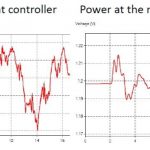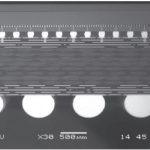A maturetool. A legacytool. A tool that’s a little long in the tooth. We have all used these terms to refer to an EDA product that has not been able to keep up with technical challenges of model complexity, performance, or new features required by current SoC and system design requirements.… Read More
Electronic Design Automation
DesignCon 2016 — signal integrity must be power-aware!
DesignCon is a unique conference — its tagline is “Where the Chip meets the Board”. Held each January in Santa Clara, the conference showcases a wealth of new technologies for advanced packaging, printed circuit board fabrication, connectors, cables, and related analysis equipment (e.g, BERT, VNA, scopes). Of specific… Read More
The Mechanical Reliability of IC Packages
At Intel back in the late 1970’s we were designing DRAM chips and mounting them in ceramic and plastic packages, however there were problems when some of the die would crack inside of the package because of thermal mismatch issues with how the die was attached to the heat spreader inside the package. Back then we really didn’t… Read More
5nm Chips? Yes, but When?
For any invention, technical proof of concept or prototyping happens years ahead of the invention being infused into actual products. When we talk about 5nm chip manufacturing, a test chip was already prototyped in last October, thanks to Cadence and Imec. Details about this chip can be found in a blog at Semiwiki (link is given … Read More
Domain Crossing Verification Needs Continue to Grow
Clock domain crossing (CDC) analysis has been around for many years, initially as special checks in verification or static timing analysis, but it fairly quickly diverged into specialized tools focused just on this problem. CDC checks are important because (a) you can lose data or even lock up at, or downstream of a poorly-handled… Read More
Evaluating the Performance of Design Data Management Software
In the wake of increased global competitiveness and shorter time-to-market windows, there has been a renewed focus by design management on the underlying data management infrastructure of the design teams. An increasing number of systems-on-chip (SoCs) now have some type of analog, digital and/or RF modules, making it imperative… Read More
The Fine Art of Engineering
There’s a small art gallery near the office. It features a new set of paintings by a local artist every two weeks. As I walk by I tend to check out what’s hanging in there. Sometimes I turn up my nose at what I see – a bit too wacky, a bit too abstract, a bit too paint by numbers. Sometimes I walk in to take a closer look but leave the shop empty-handed… Read More
True Random Number Generation
Random numbers are central to modern security systems. The humble password, perhaps the least profound application, is encrypted and verified against using SHA or MD algorithms with a random number salt. You probably remember a college class on how to generate pseudo-random numbers algorithmically, some very sophisticated.… Read More
Does IoT need Sensor Fusion? Yes, but at low-power, low cost…and higher performance
We said this in the past, but let’s reiterate that IoT devices will be successful if they can meet low-cost and low-power requirements. Low-cost is the condition for IoT devices market penetration, I mean such a market adoption that we count several IoT systems (and dozens of devices) in every house. That’s the only way to reach the… Read More
In Low Voltage Timing, the Center Cannot Hold
When I started discussing this topic with Isadore Katz, I was struggling to find a simple way to explain what he was telling me – that delay and variance calculations in STA tools are wrong at low voltage because the average (the center) of a timing distribution shifts from where you think it is going to be. He told me that I’m not alone… Read More










AI RTL Generation versus AI RTL Verification